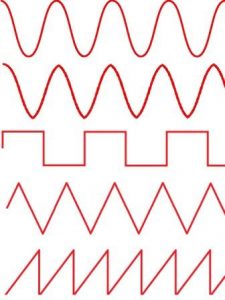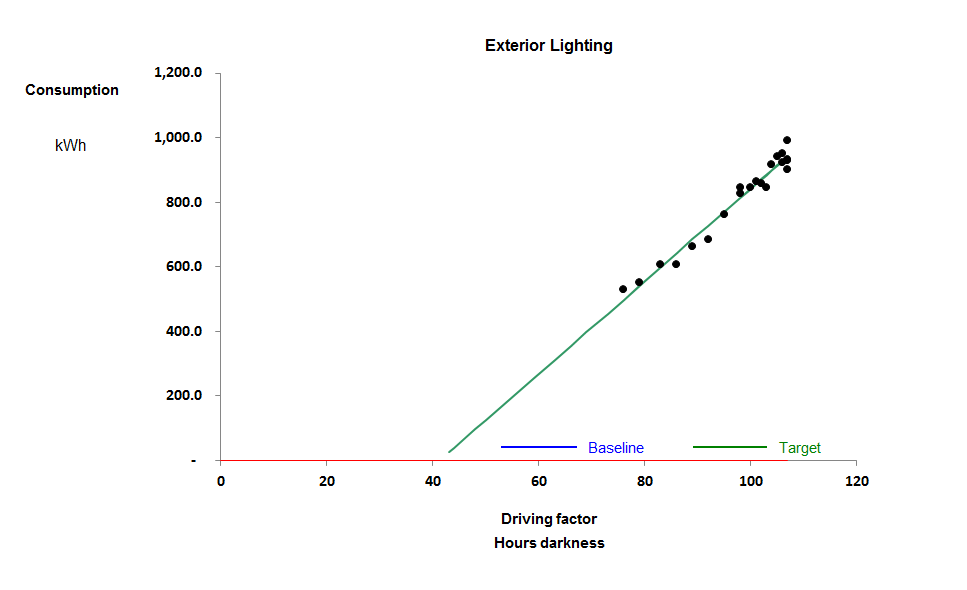 Absorption chiller: Cooling apparatus driven by heat alone
Absorption chiller: Cooling apparatus driven by heat alone
Accuracy: Degree to which a measurement reflects actual reality
AHU: See Air handling unit
Air curtain: Sheet of heated air projected across an open doorway to prevent discomfort from draughts; usually in retail premises
Air handling unit: Air handling unit: assembly of fan, filters, etc for supplying air to or extracting air from a ducted distribution system
Ammeter: Instrument for measuring electric current
amp (A): Unit of measurement of electric current
AMR: Automatic meter reading
Anemometer: Device to measure air velocity
Audit, energy: Systematic review of energy-using systems and associated procedures with a view to identifying opportunities for energy saving
For training in energy management topics see vesma.com/training
Ballast: Component of electrical control gear in a fluorescent light fitting.
BEMS: Building energy management system: computerised control and monitoring equipment for regulating time and temperature schedules etc
BEMS: See Building energy management system
Blending valve: See Mixing valve
Blowdown: Removal of a fraction of boiler water to enable removal of sludge and dilution of dissolved solids
BMS: See Building energy management system
Building energy management system: Computer system which controls the operation of heating, ventilation, air conditioning, lights and other energy services in buildings
For training in energy management topics see vesma.com/training
Calorific value: Energy content of fuel per unit mass or volume
Capacity charge: Rental paid for an electrical supply connection capable of carrying a certain current
CFL: Compact fluorescent lamp: plug-in substitute for a light bulb.
Chiller: Machine for cooling air, water, etc
CHP: See Combines heat and power
CNG: Compressed natural gas
Code 5: In UK context, a meter for registering half-hourly electricity consumption for loads above 100 kW
Coefficient of performance: In refrigeration systems, the ratio of output cooling power to input electrical power.
Cogeneration: See Combined heat and power
Colour rendering: How effective a given light source is at allowing discrimination between colours
Colour temperature: Numerical value describing a light source in terms of how ‘warm’ or ‘cool’ it appears
Combined heat and power: Electricity generation in which part of the waste heat is put to use
Compensator: Control device to regulate circulating water temperature in a heating system, reducing temperature when heat demand is low and vice versa
Condensate: Water resulting from the cooling of steam
Condenser: In a refrigeration circuit, the component through which heat is rejected.
Conduction losses: Heat losses through the walls, roof, floors, doors, windows and other solid elements of the building envelope.
Constant temperature: In heating system, regime in which circulating water is maintained at a fixed temperature and control of heat output is effected by regulating flow to heat emitters
Convection losses: Heat lost in air leaving the building through draughts and deliberate ventilation
Convector, fan assisted: Heat emitter on a central heating system in which a fan blows room air across a heat exchanger
Convector, natural: Heat emitter on a central heating system, usually enclosed in a cabinet with inlet and outlet vents, which warms room air without the assistance of a fan
Cooling tower: Device in which water used for cooling something gives up some of its heat to the air, enabling it to be recirculated in a closed loop. May be ‘dry’, employing a sealed heat exchanger, or ‘wet’ in which case evaporation of the water increases the cooling effect
CoP: See Coefficient of performance
Coriolis meter: Technology for measuring the flow rate of for example dust-laden gases; the flow rate affecting the resonant frequency of a U-shaped section of vibrating pipe
Correction factor: In the context of natural gas, the factor by which its metered volume must be multiplied to account for its pressure and temperature being other than that assumed as standard
CT: In heating system: see Constant temperature; in metering see Current transformer
Current: Rate of flow of electrical energy
Current transformer: Device placed around one conductor of an electrical supply cable to convert the current flowing in it into a safely-measurable signal for input to a meter
Cusum: Cumulative sum of deviance
CV: See Calorific value
For training in energy management topics see vesma.com/training
Damper: Flap used to control air flow in a duct
Data logger: Device for recording data from energy meters, temperature probes and other instruments
Dead band: Switching differential between for example the activation of heating and cooling in a space; sometimes in a thermostatic control the spread between temperatures that trigger changes of state each way between on and off.
Degree days: Measure of how hot or cold the weather was over a given interval, typically a week or month, in a given location or region. Used in an analogous fashion to production output as the driving factor for heating opr air-conditioning energy consumption.
Deliquescent: Dessicant material which dissolves in the water it absorbs
Delta: Connection method for three-phase devices where the load is connected from phase to phase without a neutral (cf star)
Demand, maximum: See Maximum demand
Dessicant: Material which absorbs water vapour; used for example in compressed-air dryers
Deviance : Difference between actual and expected consumption
Dew point: Air temperature at which moisture will begin to condense; also known as saturation temperature
Dichroic: Attribute of a filament spotlamp whereby the reflector allows heat to escape through the back
Direct-fired heater: Heater in which fuel is used directly, as distinct from a heat emitter on a hot-water or steam circuit with centralised combustion.
Discounted cash flow: Method of accounting for future expenditure and receipts which explicitly recognises that postponing a cash flow diminishes its value in present terms
Driving factor: Recurrent and measurable determinant of energy consumption, such as production output or degree-day value.
Dry cycling: Excessive starting and stopping of boilers, especially when supporting each other’s standing losses
For training in energy management topics see vesma.com/training
Economiser: Heat recovery unit specifically for preheating boiler water from heat in exhaust gases
Efficiency: The ratio of useful output to energy input
Electronically-commutated motor: machine, typically for DC or single-phase AC supplies, which turns a permanent-magnet rotor by synthesising of a rotating magnetic field
Embedded generation: Electricity generator owned and operated by the organisation which uses the output
EMS: See Building energy management system
Energy: Electricity, gas, oil, steam, compressed air or other like medium
Energy performance coefficient: ratio of actual to expected consumption; a numerical index of energy performance much less susceptible to distortion than specific energy ratio
Enthalpy: Total energy content of a fluid, representing both thermal and mechanical energy that could be extracted from it
Enthalpy control: Control regime in air-conditioning systems to optimise the energy requirement for regulating both humidity and temperature
Evaporator: In a refrigeration circuit, the component through which heat is absorbed
Expected consumption: rational estimate, either based on the known previous relationship between consumption and one or more relevant driving factors , or calculated from first principles
For training in energy management topics see vesma.com/training
Far infra-red: ill-defined term most commonly associated with fake energy-saving products; usually denoting heat radiated from surfaces at no more than about 80°C
Firetube: Boiler design in which combustion gases pass through submerged tubes
Flash steam: Steam resulting when hot condensate is dropped to a lower pressure
Flue: Duct through which combustion products pass en route to the chimney
Flue gas: Combustion products
Fluidised bed: Combustion not in an open flame but within a bed of loose powder
Forced draught: Fans which drive combustion air into a boiler (cf Induced draught)
Free cooling: Cooling effect achieved by drawing in cold fresh air rather than chilling recirculated air
Frost protection: Automatic application of heat to prevent freezing damage out of hours
For training in energy management topics see vesma.com/training
GCV: See Gross calorific value
Geothermal energy: Heat drawn from deep underground at sufficiently high temperature to be directly useable (cf Ground-source heat pump)
GLS: General lighting service: conventional filament lamp
Gross calorific value: Total chemical energy content of a fuel, including what would be recovered by condensing the water vapour from the products of combustion. Also called higher calorific value. Cf Nett calorific value.
Ground-source heat pump: Reverse refrigeration cycle which cools the ground in order to provide a heating effect from its condenser (cf Geothermal energy)
GSHP: See Ground-source heat pump
For training in energy management topics see vesma.com/training
HCV: See Gross calorific value
Heat: Thermal energy which can raise something’s temperature, or melt or boil it.
Heat emitter: Radiator, convector, or other device delivering heat in a heating system
Heat exchanger: Device within which a hot fluid stream gives up heat to a cold stream while maintaining separation between the two
Heat map: Graphical display of profile data in which for example demand levels are depicted as colour contours on a matrix in which each column represents one day, midnight to midnight.
Heat pipe: Closed length of tube containing a small charge of volatile liquid and a wick; transfers heat end to end through fluid boiling at one end and condensing at the other, returning via the wick
Heat pump: Refrigeration unit operated in reverse, providing heat at moderate temperature by cooling either the outside air or the ground nearby.
Heat wheel: Form of regenerative heat recovery in which the heat storage matrix is in the form of a wheel rotating continuously between the hot and cold streams.
hertz (Hz): Unit of measurement of frequency: cycles per second
Higher calorific value: See Gross calorific value
Historical baseline performance characteristic: Performance characteristic which applied at the outset of the energy management campaign
For training in energy management topics see vesma.com/training
Incidental gains: Heat gains in a building arising from lights, equipment, uninsulated hot surfaces, occupants, sunshine etc..
Induced draught: Fans which draw exhaust gases from a boiler (cf Forced draught)
Inhibitor: Chemical additive in boiler water to reduce corrosion
Insulation: Material which reduces the conduction of heat
Inverter: Electrical device for converting direct to alternating current; component of a variable-speed drive
joule (J): Unit of energy: one watt-second
For training in energy management topics see vesma.com/training
kelvin: (K) unit of temperature difference
Landfill gas: Methane emanating from waste-disposal sites and collected as a fuel
Latent heat: Heat required to melt or vaporise a substance; or heat released when a vapour condenses or a liquid solidifies. Notwithstanding the release or absorption of heat, the change of state between liquid and solid or vapour occurs without a change of temperature.
Load factor: Ratio between actual output or input and the maximum theoretically possible with continuous operation at full output or input.
Logger: See Data logger
LPG: Liquefied petroleum gas
lumen: Unit of light output power
Luminaire: Light fitting including reflector, lamp holder, control gear and lens etc
lux: Measure of the light incident on a surface per unit area
LV: Low voltage
For training in energy management topics see vesma.com/training
M&T: See Monitoring and targeting
Maximum demand: In UK context, the peak electrical power drawn over any half-hour period in a month
Mercury discharge: Type of fluorescent lamp typically used for floodlighting
Metal halide: Type of filament lamp
Mixing valve: In a Variable temperature heating circuit, the valve which regulates flow temperature by blending water from the boiler(s) with cooler water returning from the heating system. Also called a three-port valve as it has two inputs and one output connection.
Monitoring and targeting: Systematic assessment of actual against expected consumption by means of weekly (usually) overspend league table augmented by analysis tools to assist in target-setting and diagnosis of abnormal performance.
Motorised valve: Valve actuated by an electric motor under the dictates of a control system
MV: See motorised valve
For training in energy management topics see vesma.com/training
Night blind: Insulating blind on chilled display cabinet to reduce cooling requirement out of hours,
NOx: Oxides of nitrogen generated as a by-product of combustion
NTP: Normal temperature and pressure: reference used for correcting volumes and densities (0°C and 1.013 bar); cf STP, RTP
For training in energy management topics see vesma.com/training
Optimum start: Time-control regime which postpones startup, usually of heating boilers, to the latest possible time commensurate with achieving desired internal conditions at the required time.
Orifice plate: Restriction placed in a gas, air, or steam line to create a measurable pressure drop from which flow arte can be inferred
OSC: Optimum start control
Overspend league table: Weekly (usually) or monthly report in which deviations from expected consumption are ranked in descending order of excess cost.
For training in energy management topics see vesma.com/training
Passive infra-red: Technique for detecting the presence of people in a space
Performance characteristic: Mathematical relationship between energy consumption and one or more driving factors
Phase: Alternating-current electrical supplies are either single-phase (delivered through one pair of wires) or three-phase (delivered through three wires, the current waveform in each being one-third of a cycle behind or ahead of the others).
PIR: See Passive infra-red
Polyphase: arrangement of electrical supply in which (most commonly) three lines are energised by alternating current one-third of a cycle apart
Power: Rate of flow of energy
Power factor: In alternating-current electrical supplies, the ratio of useful power delivered to the theoretical maximum possible for the given current and voltage
Precision: Degree of resolution in a measurement
Profile: Pattern of demand over a day, week, or other chosen interval.
For training in energy management topics see vesma.com/training
Radiant: Heat transfer without physical contact
Receiver: Pressure vessel for storing compressed air.
Recuperator: Heat-recovery device
Reflective: property of material e.g. aluminium foil which impedes the flow of radiated energy across a transparent medium
Refractory: High-temperature insulation found in furnaces and kilns
Regenerator: In heat recovery, a pair (usually) of heat stores which take it in turns to collect heat from a hot stream and return it to a cold stream
Regression line: Best-fit line through points on a scatter diagram
Relative humidity: The ratio between the amount of water vapour present in the air and the theoretical maximum at the prevailing temperature
Repeatability: Degree to which measurements vary consistently irrespective of accuracy
Rewind: Repair of electric motor by replacement of burned-out windings
RTP: Reference temperature and pressure used for correcting volumes and densities (25°C and 1.013 bar) cf NTP, STP
Run-around coil: Split heat-recovery system in which heat is recovered to an intermediate fluid circuit, allowing heat collection and delivery to be in different places
For training in energy management topics see vesma.com/training
Sankey diagram: Diagrammatic representation of energy flows through a process or organisation in which the magnitudes of flows are represented by the widths of pathways
Saturation temperature: See Dew point
SCADA: See Supervisory, control and data acquisition
Scatter diagram: Chart showing the relationship between one value and another: commonly showing weekly energy use (vertical or x axis) against driving factor (horizontal or y axis)
Sensible heat: Heat which when added to or removed from a body, alters its temperature
Sequencing: Usually of boilers but also applicable to chillers, compressors, and other ganged utility equipment: a control regime which regulates how many units are enabled so as to match the load.
Smart meter: Consumption meter which is capable of recording data at frequent intervals for onward transmission, normally with two-way communication to facilitate remote disconnection of the user, reporting, etc
Smoke pump: Device to measure the level of soot present in flue gases when testing oil and coal-fired appliances
SON: Sodium discharge lamp giving a pure yellow light (commonly used for street lighting)
Specific energy ratio: simple ratio of energy input to (usually) product output. Supposedly an indicator of energy performance but highly susceptible to distortion.
Specific heat: Property of a material expressing the amount of heat required to raise its temperature by one degree
Stack: Chimney
Stand-alone control: Time or temperature control device that operates independently (as distinct from an Outstation)
Standing loss: Incidental heat loss from equipment incurred regardless of demand
Star: Connection method for three-phase devices where the load is connected between each phase and neutral (cf delta)
STP: Standard temperature and pressure: reference used for correcting volumes and densities (15.5°C and 1.013 bar); cf NTP, RTP
Sun pipe: Internally-reflective tube used to conduct daylight into an internal space where conventional rooflights cannot be used.
Supervisory, control and data acquisition: Computerised control and monitoring equipment for industrial process plant
Survey, energy: Review of energy-using systems with a view to identifying opportunities for energy saving
Switching differential: See Dead band
Synchronous motor: AC machine with permanent-magnet rotor which rotates exactly at supply frequency or submultiple thereof; absence of rotor winding giving reduced losses
For training in energy management topics see vesma.com/training
Target performance characteristic: Performance characteristic representing the best achievable consumption relative to appropriate driving factors
Tariff: Table of charges; typically understood as applying to supplies other than those negotiated under contract
TDS: See Total dissolved solids
Temperature: Measure of how hot something is
Thermocouple: Temperature-measuring device exploiting the small voltage developed when a junction between dissimilar metals is heated
Thermostatic radiator valve: Direct-acting device for regulating heat output from a radiator
Three-port valve: See Mixing valve and diverting valve
Total dissolved solids: Measure of the concentration of dissolved salts in boiler water
Trace heating: Heating applied to pipes in order to prevent the contents solidifying
Transformer: Device for converting alternating-current electricity from one voltage to another.
TRV: See Thermostatic radiator valve
Turbine: Rotating device for converting (typically) steam into mechanical power; also found on a small scale as a fluid-metering technology
Two-port valve: Straight-through valve giving on/off or regulated flow
For training in energy management topics see vesma.com/training
U-value: Property of an element of the building envelope expressing how easily heat flows through it per square metre of surface area
Vapour-compression chiller: Cooling apparatus driven by mechanical power
Variable air volume: Regime for ventilation air distribution where the supply of cooling is regulated by changing the volume of air distributed
Variable refrigerant volume: Regime for regulating cooling power in an air conditioning system
Variable temperature: In heating system, regime in which the circulating water temperature is varied to limit heat output according to likely demand (see also Compensator)
Variable-speed drive: Electronic device which alters the mains frequency fed to an electric motor, causing it to rotate at a different speed
VAV: See Variable air volume
Venting: Removal of air from, for example, steam circuits
Venturi: Tapering constriction in pipework used as a means of inferring flow rate from the pressure drop in the throat
Viscosity: Property of a fluid which determines its resistance to flow
volt (V): Unit of measurement of electric potential or driving force
Vortex meter: Gas, air or steam meter in which flow rate is inferred from the frequency of eddies shed by the fluid passing over a bluff body
VRV: See Variable refrigerant volume
VSD: See Variable-speed drive
VT: See Variable temperature
watt (W): Unit of power








